Submitted by Antonello Magliozzi
"Connection with nature is the basis of our evolution," says Joachim Eble
Italy Architecture News - Jul 11, 2024 - 15:21 3890 views
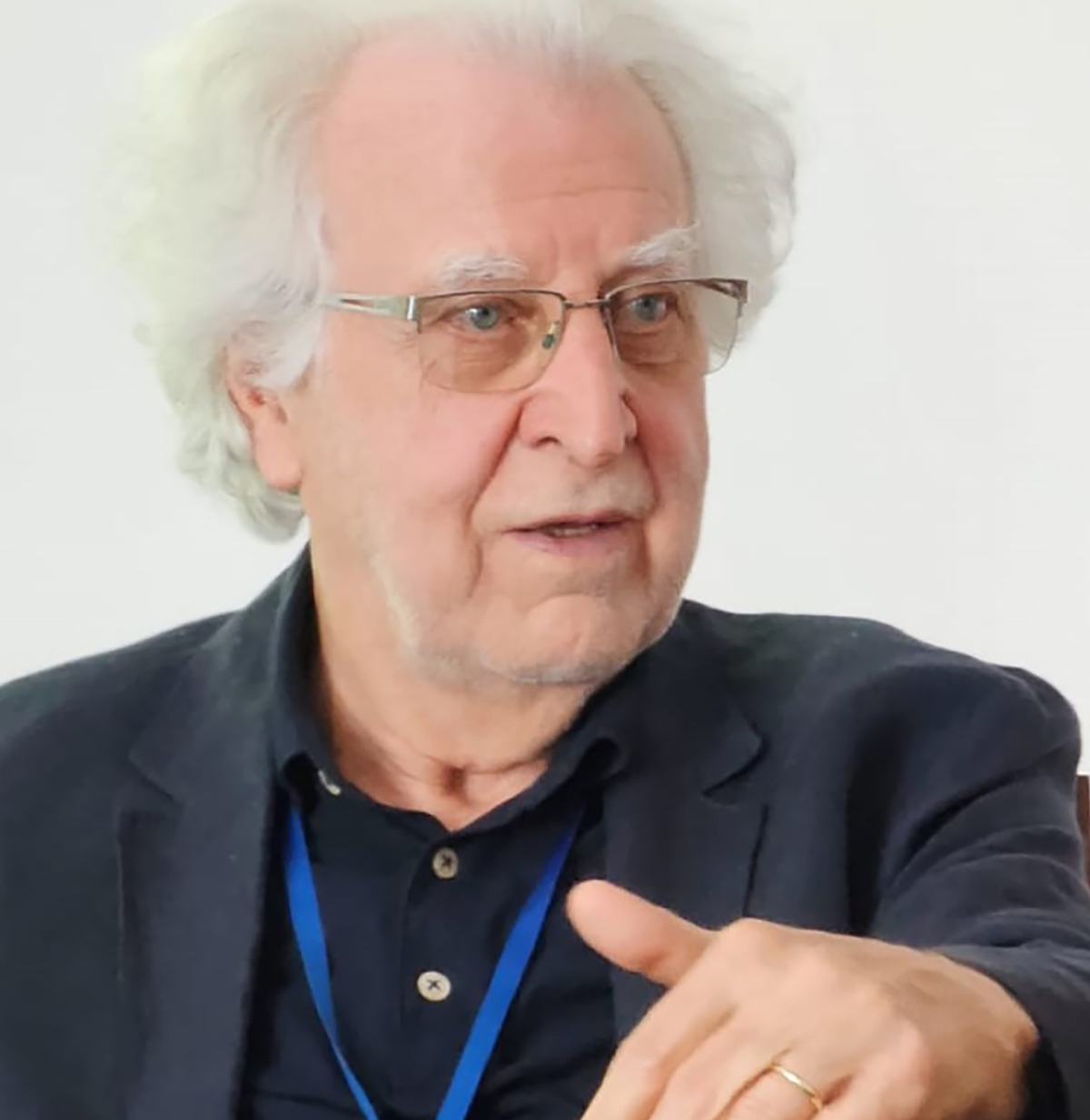
"Even if I knew that the world would end tomorrow, I would still go and plant an apple tree today.” Who said that, Martin Luther or Joachim Eble? Both! It is Joachim's quote that he uses to describe his modus vivendi, his idea of survival, to summarise the simple complexity of human evolution, in an exclusive interview with the World Architecture Community. An interview that I could call timeless, as if it were a view of the world from above, comparable to an eagle flying over boundless territories, based on forty years of ideals, experiences and projects.
Joachim Eble is an urban architect, a founding master of modern bio-architecture, specialising in sustainable design at all levels from architecture to master planning, with research and development projects in Europe, Asia and the Middle East. He is a quiet man, attentive to the meaning of every word, with a culture based on the principles of Anthroposophy, which has always sought to study the physical and spiritual dimensions in a scientific and unified manner. From the very beginning of his professional activity, Joachim has attached importance to the healthy processes that exist in our ecosystem, those that involve 'nature within us' and 'nature without us'. Two spheres that necessarily overlap and require a cultural connection.
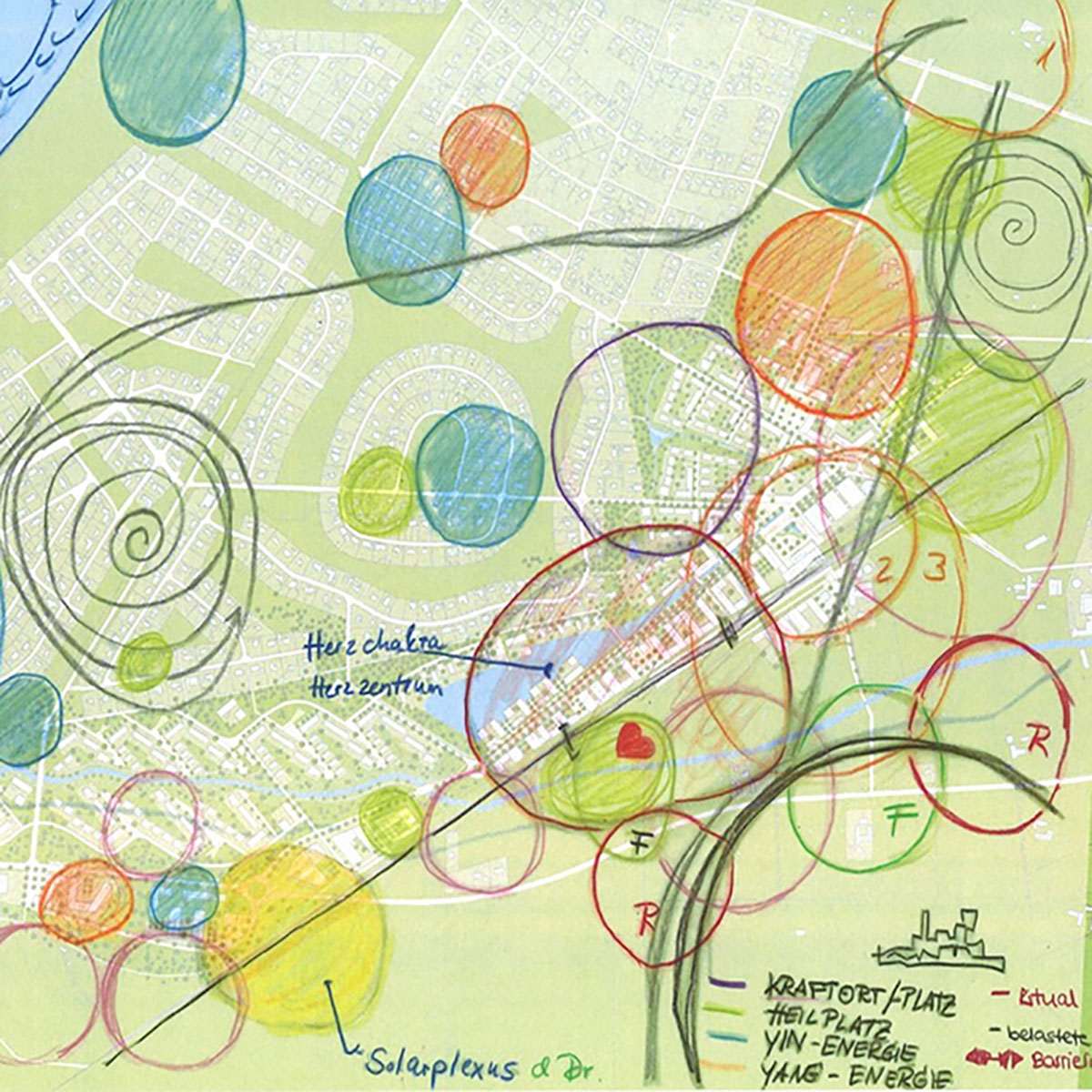
Bostad Herzchakra project. Image © Eble Meserschmidt
"The connection with nature and the environment is the basis of our evolution”. "If there is no contact between the mind and the environment, the environment will become entangled and die, and the human being will become depressed", is how Joachim defines the core of his beliefs and his work. "We need nature for our well-being, which is why I always include nature in my projects, also for therapeutic purposes". A 'spiritual connection' with the place is necessary, with the 'genius loci', which in fact becomes a 'living partner'. For Joachim, this connection must involve "real things, such as materials, natural functions and the nature of functions". He goes on to say that: "we live in a living system, so the projects we make are only integrated into the environment if they are also living. On the other hand, projects can reactivate ecosystems by triggering bio-natural processes".
When asked about the perfect recipe for delivering projects, Joachim replies: The processes can be very different. I could tell you that the most important thing is 'project thinking', especially when starting a new project. I don't have a recipe, but I always start with questions: what are the main problems? "I always try to think and feel what the biggest challenges are. I generally trust solutions that start with holistic ideas. Everything is connected to everything! It is important that the final solution is a balance of all needs". Joachim again emphasises the importance of a spiritual connection with the place: "For me, geomancy is not a scientific approach, any more than Feng Shui is, but a cultural 'connection' with the genius loci. It is a very old approach, which, as Joachim recalls, goes back to Vitruvius, the father of architecture, who spoke a lot about geomancy in relation to the choice of places, centres and directions of development.
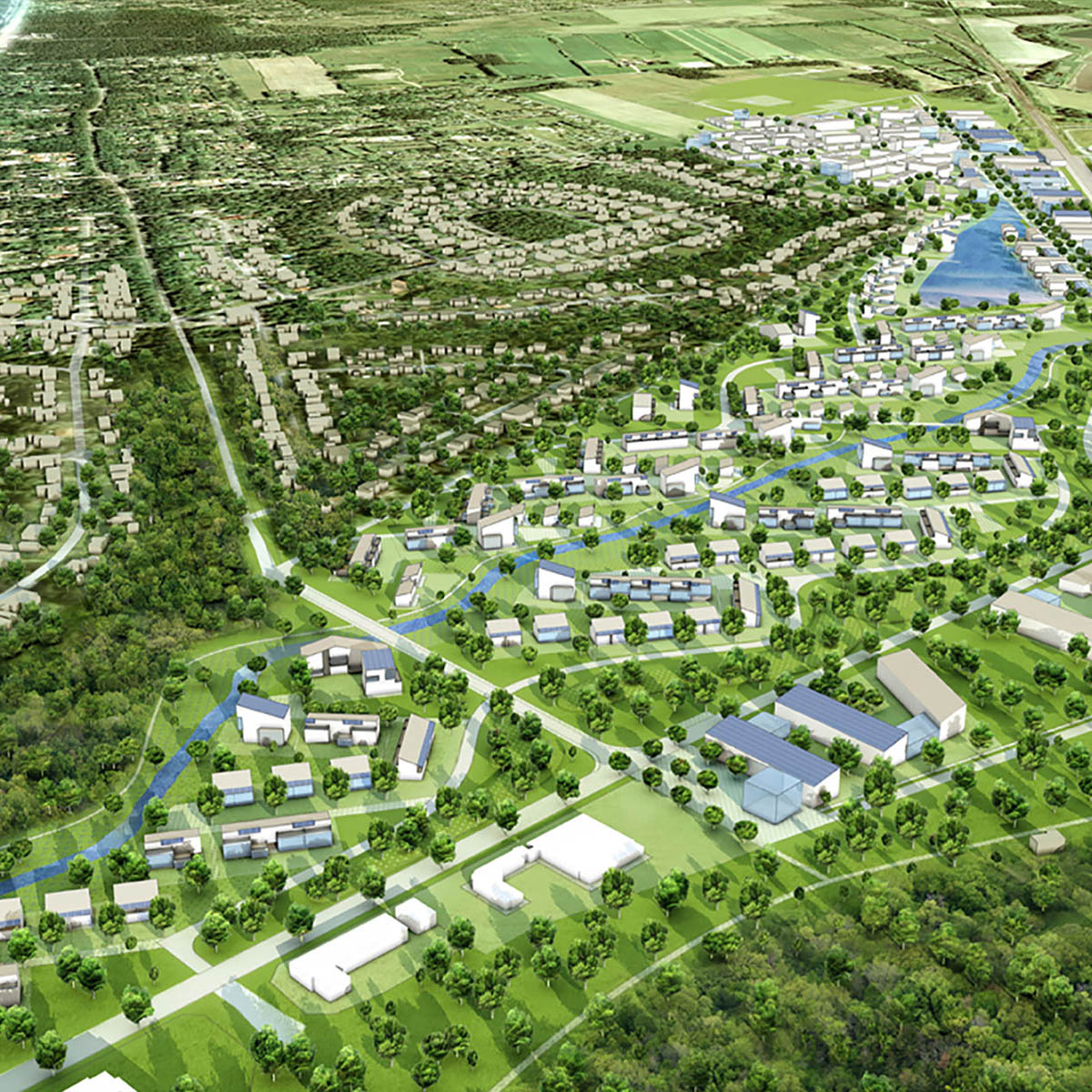
Bostad Sweden project. Image © Eble Meserschmidt
It is important to recognise that the philosophical value of Joachim's design choices materialises physically, becoming living entities. We see this in his projects that have been realised since the 1980s and still exist. "Many of the environmental and landscape decisions made at that time, such as rain gardens for the communities, or architectural choices of sustainable building materials, or bioclimatic solutions of the winter gardens in relation to energy needs, still exist today and represent sustainable solutions. Why can I say this? Because these projects have integrated into the natural or built ecosystem". Coming back to Joachim's working method in this respect, he says: "If you are prepared to listen and feel, if you welcome the genius loci as a partner, you can work on "native planning" in order to glimpse the evolution of the natural or man-made living entity.” A principle that requires interpretation, but also concrete and tangible action.
"I want to work in this place because of the fantastic atmosphere!" In the end, if a project creates atmospheres and sensations that synthesise the symbiotic relationship between man and nature, it will have measurable results. This is how Joachim imagines a successful project: for example, through the use of air-conditioning and ventilation technologies inside the buildings that are based on natural systems and promote evolutionary thinking, both physically and mentally. Bioclimatic greenhouses, indoor gardens watered by cascades of rainwater, help to achieve the best bioclimatic conditions while ensuring harmony. In fact, an atmosphere is created that is dictated by natural phenomena, such as the continuous flow of water from waterfalls, which, even with their noise determine a connection with the senses". And these are just physical phenomena. As Joachim points out: "The air we breathe must be ionised, because our lungs need negative ions, which are precisely those produced by plants and bioclimatic systems.
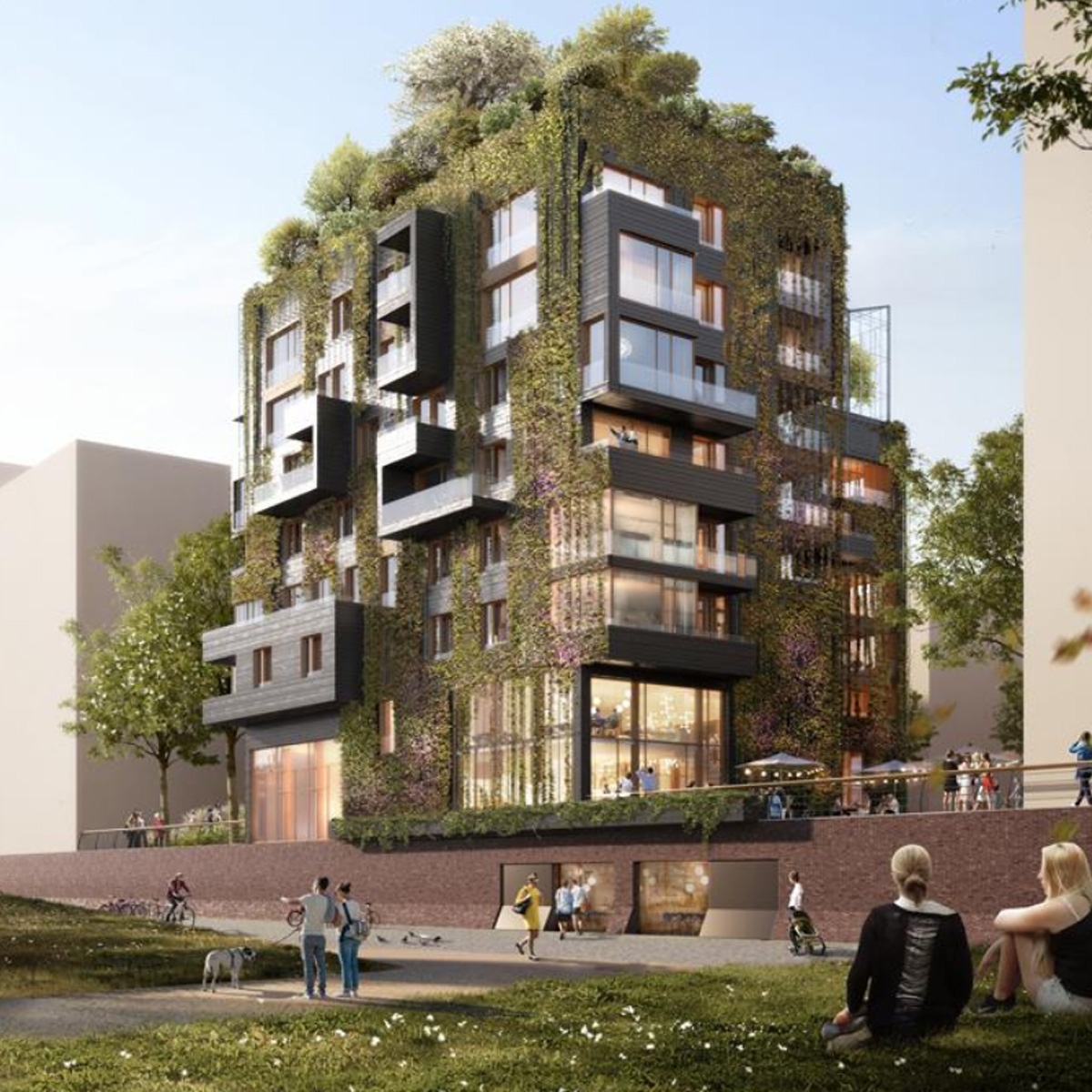
We-House Hamburg Visualisierung. Image © Moka-Studio
Joachim's words sound as scientific and mystical at the same time, but as real as his blueprints. They seem to sum up timeless thinking, resetting history and looking to the future at the same time. And on the subject of the future and the current environmental challenges dictated by climate change, Joachim says: " Our planet is losing its adiabatic cooling capacity due to the loss of forests and endless agricultural and industrial production. I believe that only part of the problem of climate change comes from cities, while another significant part comes from agricultural systems, together with the loss of natural ecosystems. Everything we do as architects or urban planners must be directed towards bringing 'nature back'. Nature is our partner for survival. I have been in the profession for forty years now, and I am very happy to see today that most architects and urban planners are working in the right direction. Knowing what needs to be done, however, is only one side of the coin; it needs to be realised through collective actions, which also depends on politic choices. I must tell you, however, that the political situation does not seem easy at the moment."
As for the future, Joachim is then both optimistic and pessimistic, and he believes that much will depend on the evolution of our collective maturity. What the European Union has done with the Green Deal is certainly an important signal, but according to Joachim it has the limitation of being insufficient and bureaucratic. Today, a real alliance between all the players in the sector is essential", and it is not possible to imagine a top-down approach, but rather a growth influenced by the many who are committed to "bringing back nature". Ultimately, he says, everything will depend on the sector's professionals, who, united, will be able to push for an acceleration of the regeneration processes and find new solutions every day. And in the future, there is of course room in the box for Joachim's dream, who answers as follows when asked specifically: "I would like to create a team to design the city of the future! A holistic, interdisciplinary, international team for the city of the new millennium."

Ecocity Wünsdorf. Image © ICEC
Read the full transcript of our interview with Joachim Eble below:
Antonello Magliozzi: Joachim, you are considered among the founding masters of bio-architecture. Over several decades, since the last thirty years of the last century, you have developed multiple experiences of sustainable design solutions, both at the level of buildings and at the level of neighbourhoods. Could you tell WAC readers about the origins of your profession, and in particular how your interest in bionatural architecture came about?
Joachim Eble: It's a long story, but I could say that it's been a steady growth. As a young architect, I had the ambition to create real things and I had the opportunity to work in a factory specialising in medical equipment for pharmacies, medical centres, doctors' surgeries, etc. That was in the mid-1970s, around 1975. During this experience I began to learn that many of the furnishings contained chemicals that were harmful to human health, which came as a shock to me. This sparked my interest in natural products and I dedicated myself to the study and practice of architecture that was healthy for people and the environment. So I started to pay attention to the healthy processes that exist in our ecosystem, those related to 'nature within us' and 'nature without us'. This was just my starting point, because I realised that it is not just buildings, but also neighbourhoods and cities that are part of a single system.

Eble philosophy. Image © Eble Meserschmidt
Antonello Magliozzi: Could you also give us some reference on the cultural background that contributed to your inspiration?
Joachim Eble: At that time in the region where I lived, Rudolf Steiner's thought was widespread: the discipline of anthroposophy; a theory that claims to be able to study physical reality and the spiritual dimension in a scientific and unified way. A romantic philosophy that, from my point of view, has always been more relevant to the countries of Mittleurope than to those of Mediterranean Europe.
Antonello Magliozzi: Joachim, starting from this philosophical approach, what are the most important aspects of a project for you? In other words, what are the must-have drivers of your projects?
Joachim Eble: This is not an easy question to answer, as the processes can be very different. I could tell you that the most important thing is 'project thinking', especially when starting a new project. I don't have a recipe, but I always start with questions: what are the main problems? Are they environmental or social problems, or are they constructive problems? I always try to think and feel what the biggest challenges are in the context. In general, I trust solutions that come from holistic ideas. Everything is connected to everything! Then you can start with ideas about materials, energy solutions or mobility, but the important thing is that the final solution is about balancing all the needs.
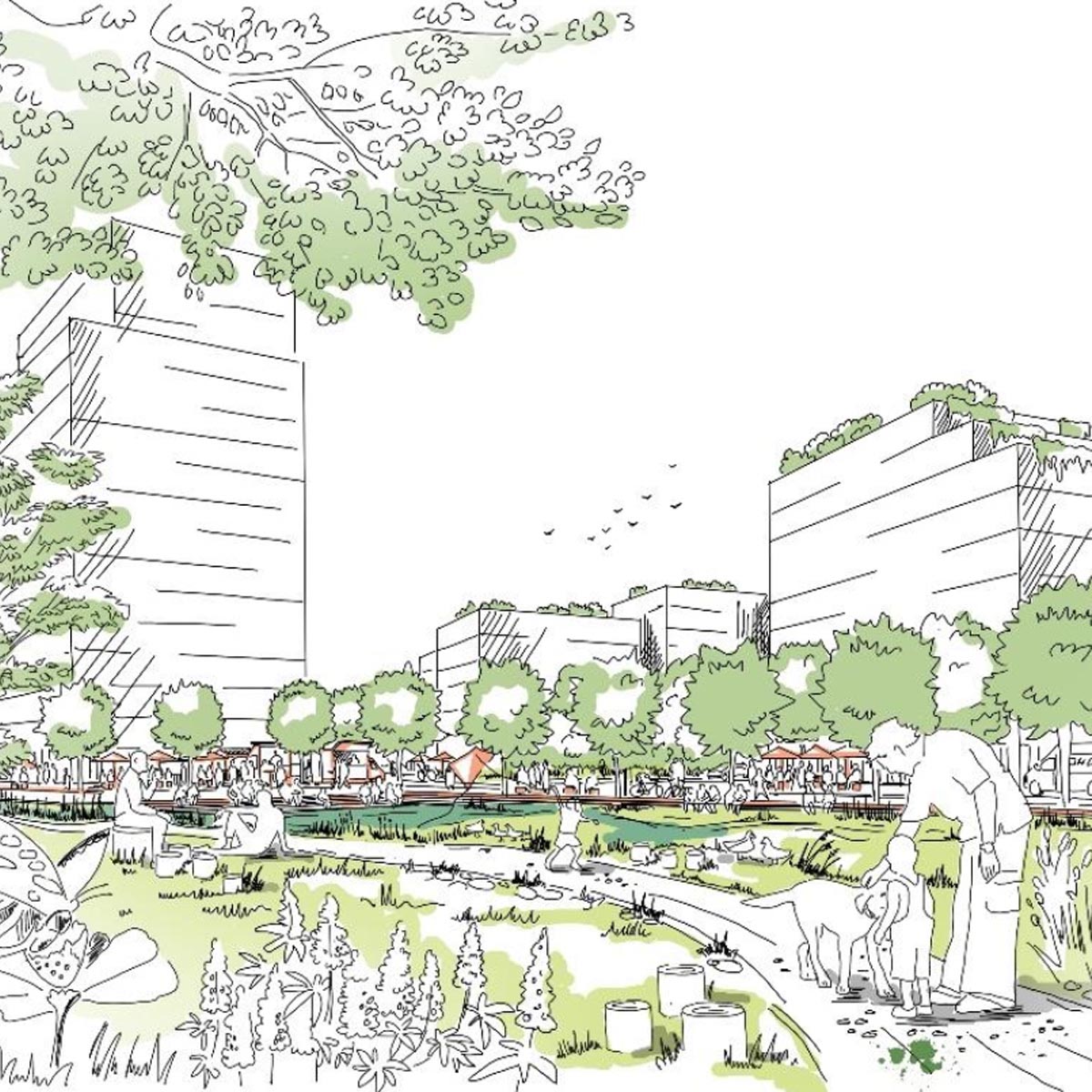
Quelle - Eble Meserschmidt. Image © Henning Larsen
Antonello Magliozzi: In such a context of multidisciplinary work, how do you realise that you have managed to solve with your project the major challenges you initially thought and felt?
Joachim Eble: I am fortunate to have worked in this sector for over 40 years. Some of my projects from the 1980s and 1990s have been realised and still exist. Many of the environmental and landscape decisions made at that time, such as rain gardens for the community, or architectural choices of sustainable building materials, or bioclimatic solutions of winter gardens in relation to energy needs, are still alive today and represent sustainable solutions. Why can I say this? Because these projects were either integrated into, or created, the natural or built ecosystem. We live in a living system, so the projects we build are integrated into the environment if they are also living. In other words, they can reactivate ecosystems by triggering bio-natural processes.
Antonello Magliozzi: You often take inspiration from the 'Genius Loci' in your projects. What is your personal definition of the spirit of the place?
Joachim Eble: I am convinced that genius loci are a kind of 'living partner'. If you accept such a 'partner', if you feel its spiritual value, you can read the history of a place and be helped to imagine its more sustainable future. If you are willing to listen and feel, if you accept the genius loci as a partner, you can work on 'native planning' to see the evolution of the natural or man-made living entity. I believe this is the only way to deal with climate change issues. We need a methodological change from a deconstructivist process to a process of partnership with places, with their history and their specific indigenous needs.

Arkadien Asperg project. Image © Henning Larsen
Antonello Magliozzi: Joachim, you sometimes refer to this need to listen to places as geomancy or feng shui do. Is this a working method that you use in urban projects and master plans?
Joachim Eble: For me, geomancy is not a specific method, but a way of thinking about how to build in a way that is healthy for people and the environment. And it is closely related to anthroposophy, which has always inspired me. So when I start to design a master plan, it is essential for me to know the spiritual needs of the place, I could say the natural vocations. For me, geomancy is not a scientific approach, nor is Feng Shui, but a cultural 'connection' with the genius loci. I would like to remind you that even Vitruvius, the father of architecture and planning, talked a lot about geomancy in relation to the choice of city sites, the location of city centres and the directions and lines of development.

Lago di Pergusa Plan. Image © Joachim Eble
Antonello Magliozzi: Joachim, the idea of a "global connection of things" of your projects emerges from this conversation. A connection that creates harmony with the environment. Is it possible to say that this connection also has a therapeutic value for the environment and for people?
Joachim Eble: You have touched the core of my beliefs and my work! I always work through a 'spiritual connection', but this must be connected to real things, such as materials, natural function and the nature of function. Working with nature is also generally referred to by the term biophilia, which I would say is central to our work, as connection with nature and the environment is the basis of our evolution. If there is no contact between the mind and the environment, the environment will become entangled and die, and the human being will become depressed. We need nature for our well-being, which is why I always include nature in our projects with therapeutic goals. For example, the integration of air conditioning and ventilation plants in buildings through natural systems allows both efficient consumption and the creation of a state of contact with primary agents that promote physical and mental evolutionary thinking. Bioclimatic greenhouses, indoor gardens fed by cascades of rainwater, ventilation by natural convective movements, help to create the best bioclimatic conditions, while ensuring harmony between man and context. In fact, an atmosphere is created that is dictated by natural phenomena, such as the continuous flow of water from waterfalls, which, even with their noise and light variations, determine a connection with the senses. That's how people start to love a place and want to live there and say: I want to go and work there because of this fantastic atmosphere. And it's not just spiritual, it's also physical. The air we breathe needs to be ionised because our lungs need negative ions, which are produced by plants and bioclimatic systems. This is an approach that can be adopted both within buildings and in relation to neighbourhoods that can be equipped with a bioclimatic sphere. It is very difficult to do this at the city level, but it is absolutely possible at the neighbourhood level.

Zeitgeist asset management. Image © Henning Larsen
Antonello Magliozzi: In relation to the climate crisis, do you think we will be able to realise solutions to mitigate the emergency and survive?
Joachim Eble: I am not sure I can give an optimistic answer. As a German cultural heir of Martin Luther, I would say: "Even if I knew that the world would end tomorrow, I would still go and plant an apple tree today.” Today, scientists tell us that the problems of climate change focus mainly on global warming, which depends on CO2 emissions. I believe that this is only half of the problem, because it does not show that we have forgotten how to live in harmony with nature. Our planet is losing its adiabatic cooling capacity due to the loss of forests and endless agricultural and industrial production. I believe that only part of the problem of climate change comes from cities, while another significant part comes from agricultural systems, together with the loss of natural ecosystems. This means that everything we do as architects or urban planners must be aimed at 'bringing nature back'. Nature is our partner in survival. As for our future, I could tell you to be optimistic or pessimistic about the evolution of our maturity. If architects and urban planners begin to be more 'profound' in their choices, in order to rebalance anthropised contexts, I think we can be optimistic. In this sense, new solutions will have to be found every day. On the other hand, I have to say that I feel a little pessimistic when I think that some of this work needs to be facilitated and encouraged by policy makers and politicians. I have been in the profession for forty years now and I am very happy to see that most architects and urban planners today are working in the right direction. But knowing what needs to be done is only one side of the coin; it needs to be translated into political action. I have to tell you, however, that the political situation does not seem easy at the moment.
Antonello Magliozzi: It is true that there is still a disconnect between governance and the community of professionals engaged in tackling climate problems. However, the European Union is directing investment with a new ecosystem of rules under the 'Green Deal'. What is your opinion on this?

Hilden Visu project. Image © Moka Studio
Joachim Eble: I have to admit that I am not a super-expert on EU regulations, but I have the feeling that they are not enough and that they have a dilettantish connotation. It seems to me that they do not speed up solutions, but rather bureaucratise the production system. I therefore feel that it is not enough. I believe that what is needed today is an alliance between all the players in the sector. At the end of the day, everything depends on the professionals in the sector.
Antonello Magliozzi: My last question is about dreams. Do you have a dream in your box? You already have a lot of experience and success in your box, but is there something missing? A big dream!
Joachim Eble: Yes, I still have dreams (smiles Joachim)! My dream is to create a team to create the city of the future! A holistic, interdisciplinary, international team for the city of the new millennium.
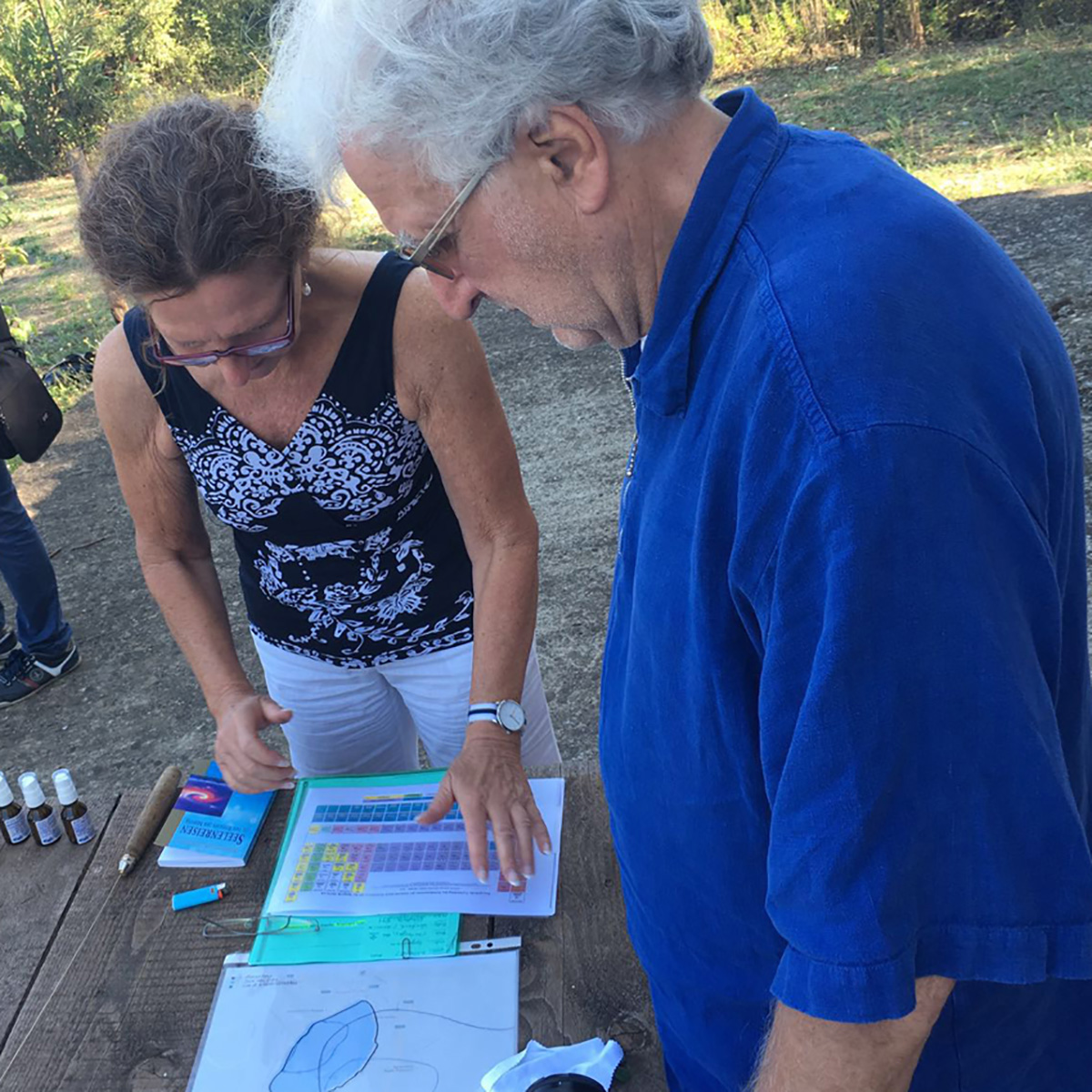
Lago di Pergusa Erdheilungs workshop. Image © Joachim Eble
Top portrait image in the article courtesy of Joachim Eble.
All images courtesy of Eble Meserschmidt unless otherwise stated.
